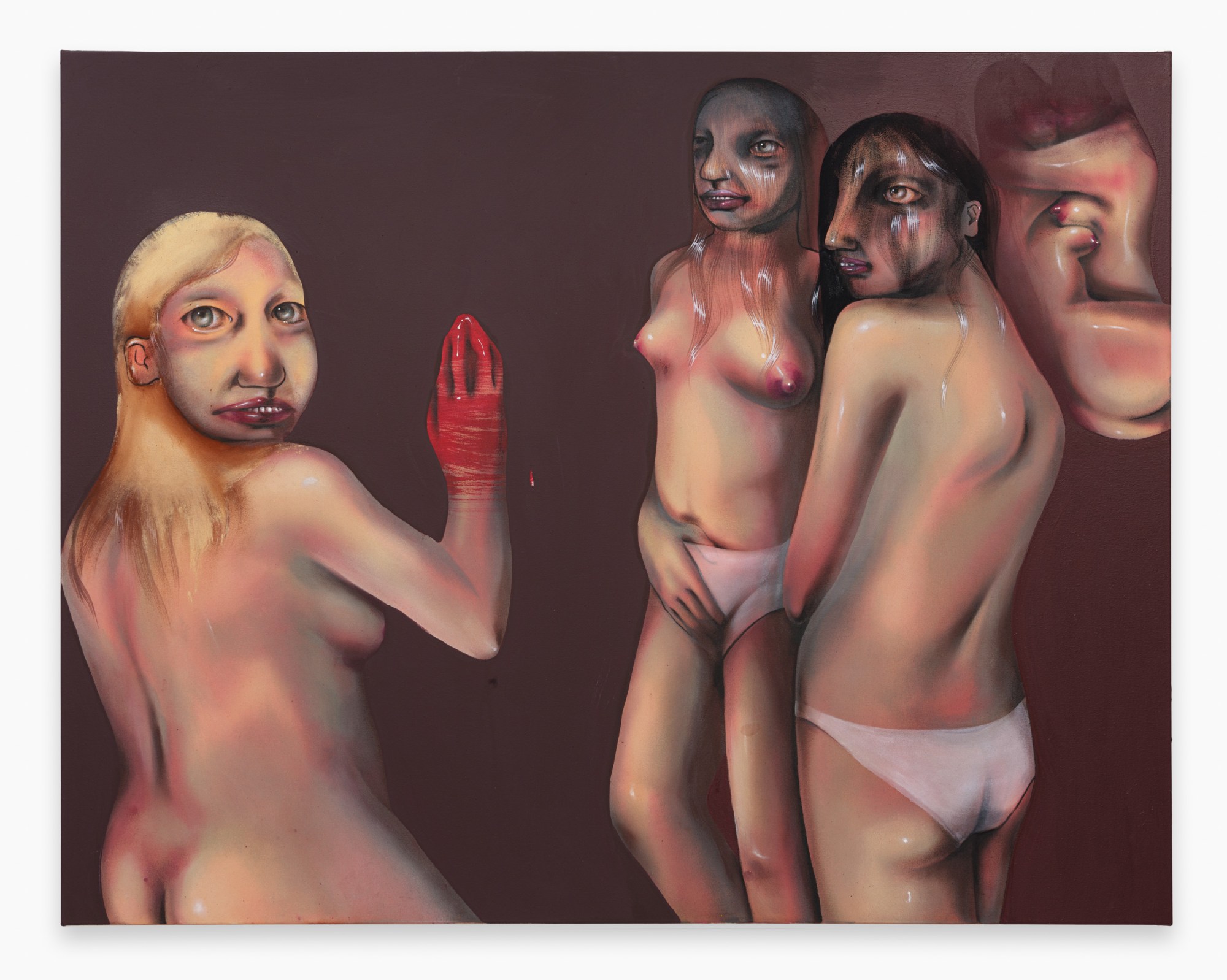In the climatic final scene in Daisies, Věra Chytilová’s 1966 cinematic call to rebellion, two women enter a banquet hall laden with rich delicacies and fine food. Over the course of a few minutes, they descend into a depraved odyssey of gluttony and wanton hedonism, consuming or destroying everything in sight.
This sequence contains the type of subversive social messaging that we’ve come to expect from Czechoslovak New Wave film. It’s a sentiment that also underpins Guts Gallery’s latest group show, (It’s My Party) I Can Cry if I Want To. “Beyond the alluring aesthetics of this scene, what struck me most was the tenuous threshold it treads between the innocent and the perverse,” the show’s co-curator Ariane Hughes says. “The protagonists are playful yet absurd, elegant yet awkward.”
This unlikely harmony is central to the experiences of womanhood depicted by the nine artists exhibiting alongside Ariane. In kaleidoscopic carousel, women’s bodies appear in frames unbound by preconceived notions of gender and femininity, first invoking and then dissecting the stereotypes applied to them. “The image of a woman echoes throughout the entire show,” Ariane says. “Even when the physical woman isn’t present, the trappings of womanhood are. We are not just presented with pretty pictures of conventional femininity; instead, the audience is challenged and confronted with nuances of existing as a woman both corporeally and socially.”
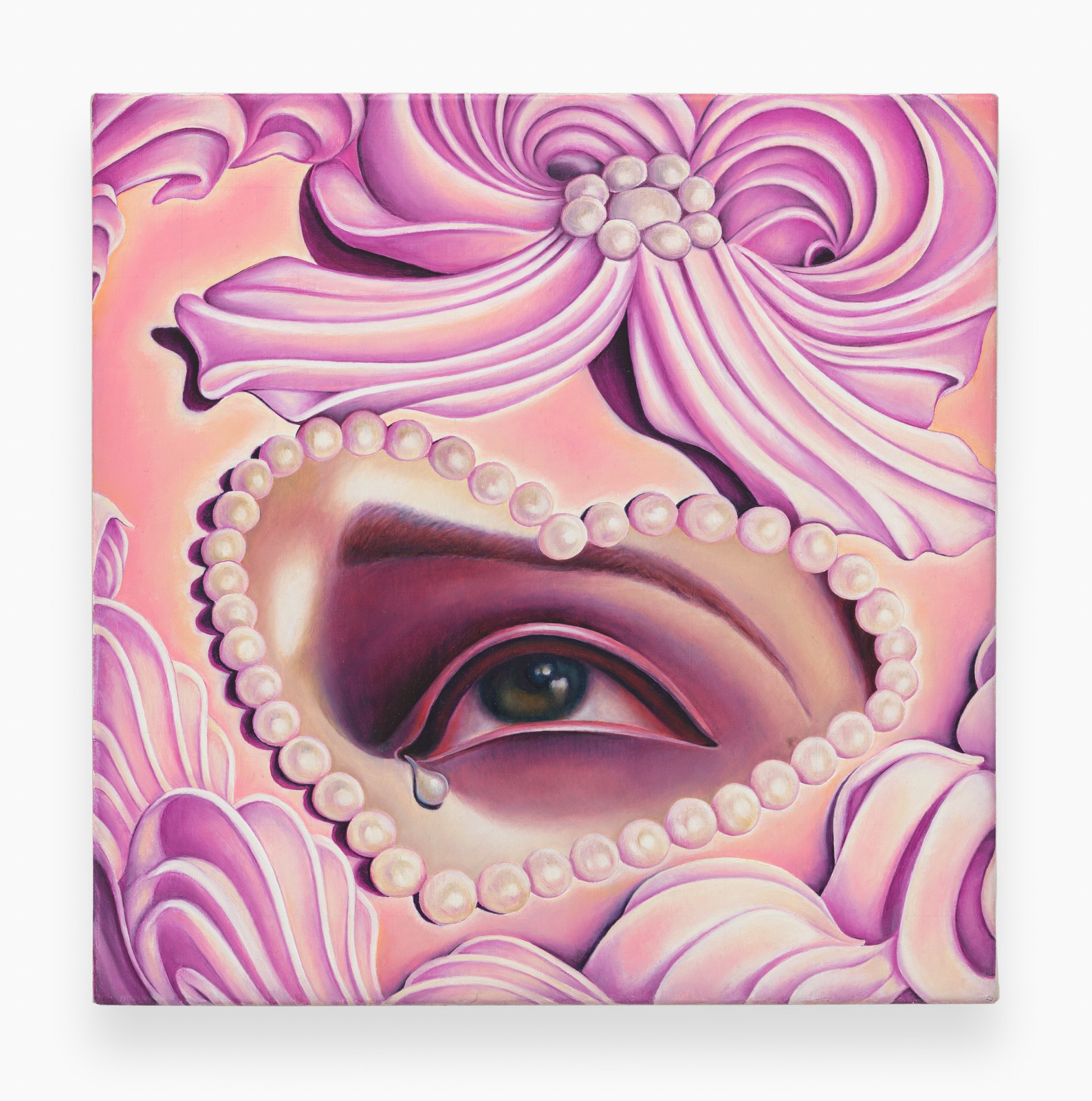
In Elsa Rouy’s piece “Bloodflowers”, gleaming yet gruesome bodies seep together in erotic embrace, treading the borders of carnal attraction and disgust. These abject distortions jolt you into awareness of your own physicality. “The beauty of the grotesque,” Elsa says, “is its ability to simultaneously capture the internal tensions between the feral and the serene, the transgressive and the humorous. It is a constant sense of desolation on the periphery but a strength and ability to laugh it off.”
She added: “I read a quote recently by Elana Dykewomon which starts by saying ‘Almost every woman I have ever met has a secret belief that she is just on the edge of madness.’ In “Bloodflowers”, the tension of polished external appearances and a nonchalance towards the brutal and strange, for me, depicts this shared experience of womanhood.”
In an attempt to reveal the “erotic-abject spectrum” as Ariane describes it, many works featured in the show address themes of hyper-sexualisation to critique our consumption of women in media. Ariane’s own contribution takes two tropes of femininity to the absolute extreme, in a frenzied video piece that frames the female body as a site of revolt.

Elsewhere, artists warp the dimensions of form to satirise objectification. Painter Olivia Sterling shares a sizeable sticky feast in her piece “Don’t Be Timid (Nigella’s Midnight Snack)”, in which fridge shelves frame a comically large bust and pudgy fingers that taunt the cake in front of them. “The title”, Olivia says, “comes from a Nigella Bites episode.” While pouring double full fat cream into a bowl, the widely considered ‘sexiest TV chef of all time’ Nigella Lawson, turns to camera and breathily says: “Don’t be timid”.
“She flirts with us, telling us to disregard all expectations of female smallness,” Olivia adds. “Messaging to women is often the complete opposite of this. Alongside exploring the act of eating and fatness, this painting touches on white femininity and how it can seem alien and monstrous to me as a plus-size Black woman.”
The artist’s trademark slapstick visual quality, enhanced by a saturated colour palette facilitates the discussion of race, gender and objectification with the same sense of humour as Vera Chytilová’s masterpiece.
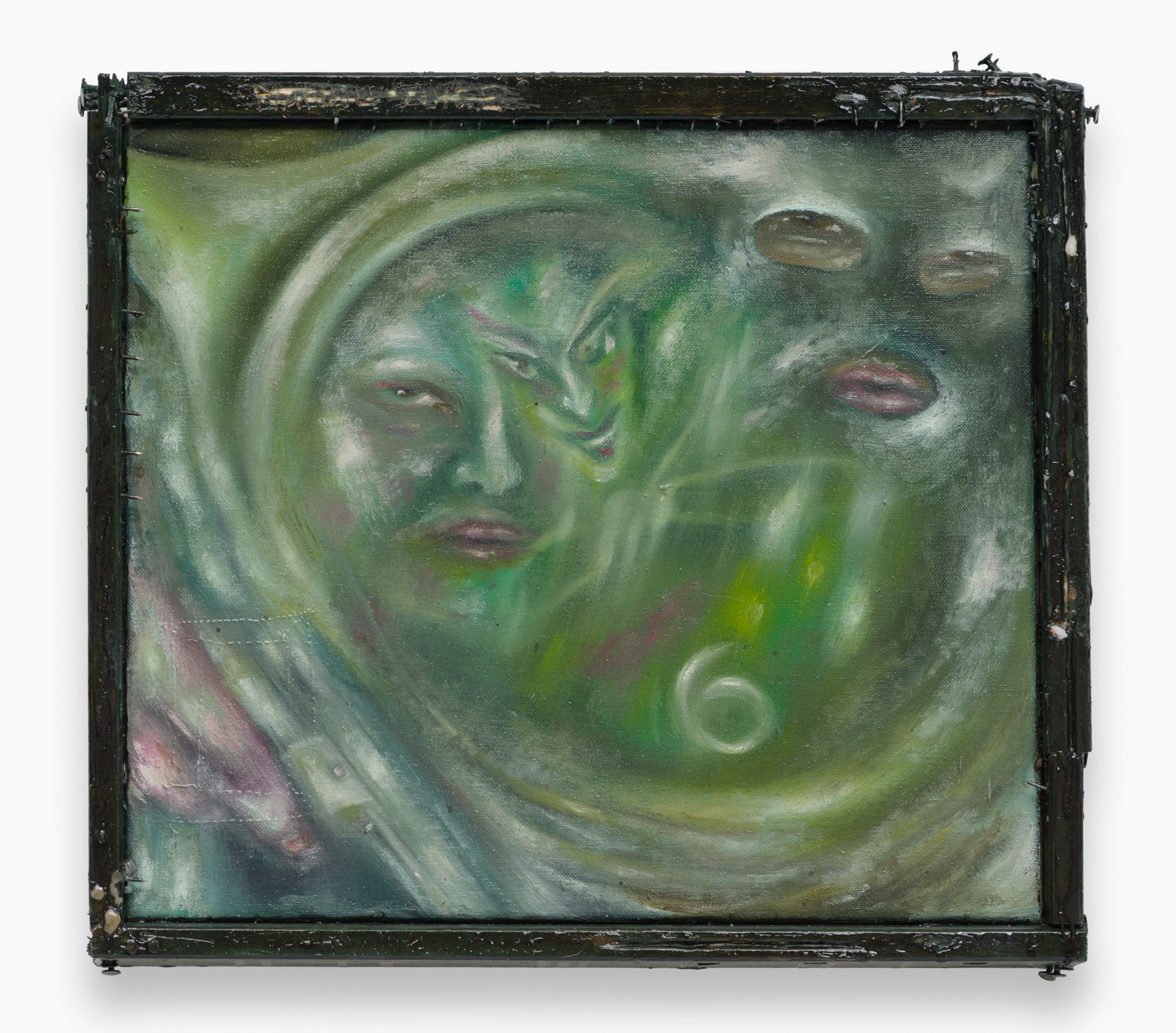
“In cartoons,” Olivia says, “violence or transformation are expected and utilised for laughter. Here, the sexy woman switches to a monster. As beautiful and pale Nigella tampers with the white cake below her, the cake becomes a reflection of herself as a monolith. She is a gleaming white woman whose grotesqueness and largeness are accepted and celebrated. Women of colour aren’t afforded this luxury.”
The show is rich and redolent with suggestions of consumer culture avarice, best expressed in Vilte Fuller’s contribution. “I paint and specialise in extortion” Vilte says. Their work exists somewhere between figuration and abstraction, where spectral and disembodied characters emerge from collectable watch faces, submerged in swamps of chromium oxide. The painting was borne “rather facetiously”, Vilte explains, “from a conversation that I had with a few of my girlfriends about women being treated as commodities such as luxury watches, expensive cars and high-rise city apartments.”
While preserving their idiosyncrasies, the artists involved form a sisterhood that assumes a language of self-adulation, holding up a mirror to the contemporary culture of being seen. “Female Artist Self-portrait 02062021” is the product of a creative partnership between performance artist and painter Xu Yang and photographer and artist Victoria Cantons. As a couple, they rely on personal intimacy to emulate and reaffirm the safety of the female gaze. “We didn’t want the viewer to have anywhere to hide as the subject looks out,” Victoria says. “It’s a conscious engagement but also an invite to the viewer to consider what they’re doing.”
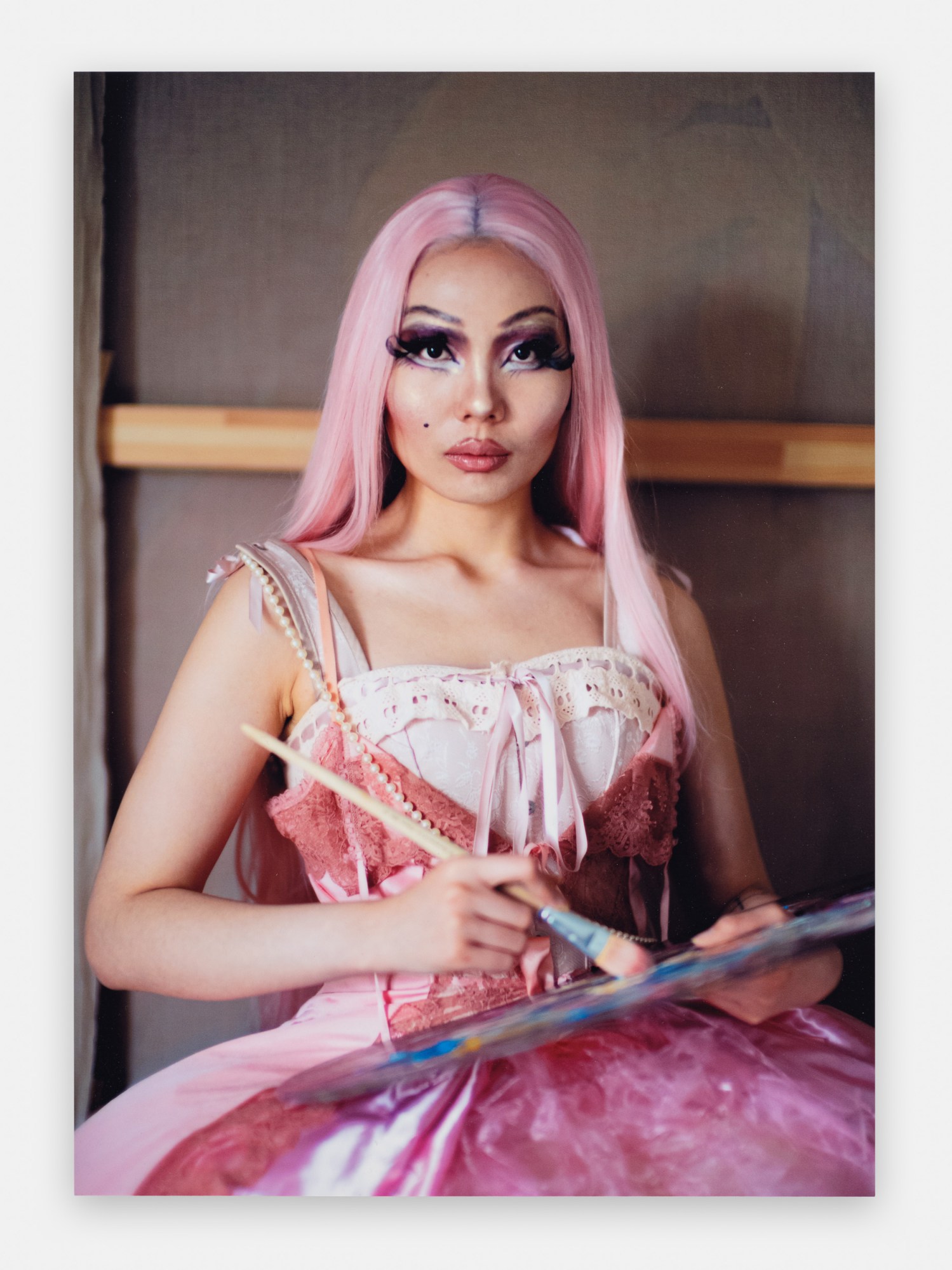
Yang elaborates: “For this particular photograph, inspired by self-portraits of 17th century artists, the camera is taking up the place of the mirror, so that what we see is the artist gazing at herself during the act of painting. When I was performing, my painted face, the wig and costume acted like barriers. My feelings became introverted, the sense of awareness of my body became stronger and I stopped being conscious of how I would be viewed.”
This carnivalesque exhibition from Ariane Hughes and co-curator and Guts Gallery founder Ellie Pennick encourages a reclamation of the numerous constructs and judgements placed upon women. “Bodies are weird and wonderful, and they definitely do not have to subscribe to Instagram guidelines,” Ariane says. “In the culture of narcissism that we live and breathe, remember it is your party, and you can – must, even – cry if you want to.”
‘(It’s My Party) I Can Cry If I Want To’ is at Guts Gallery now until February 2, 2023.

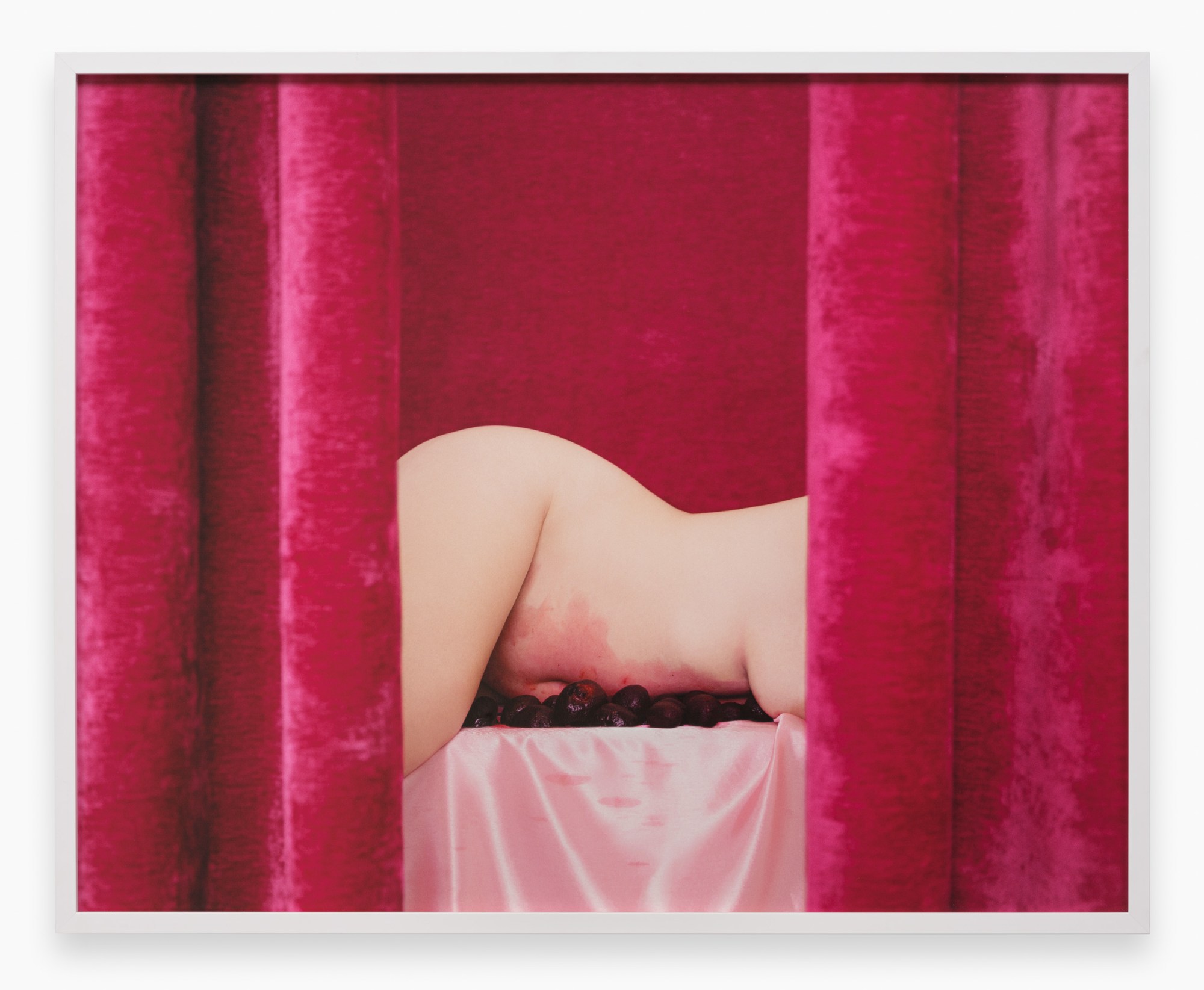
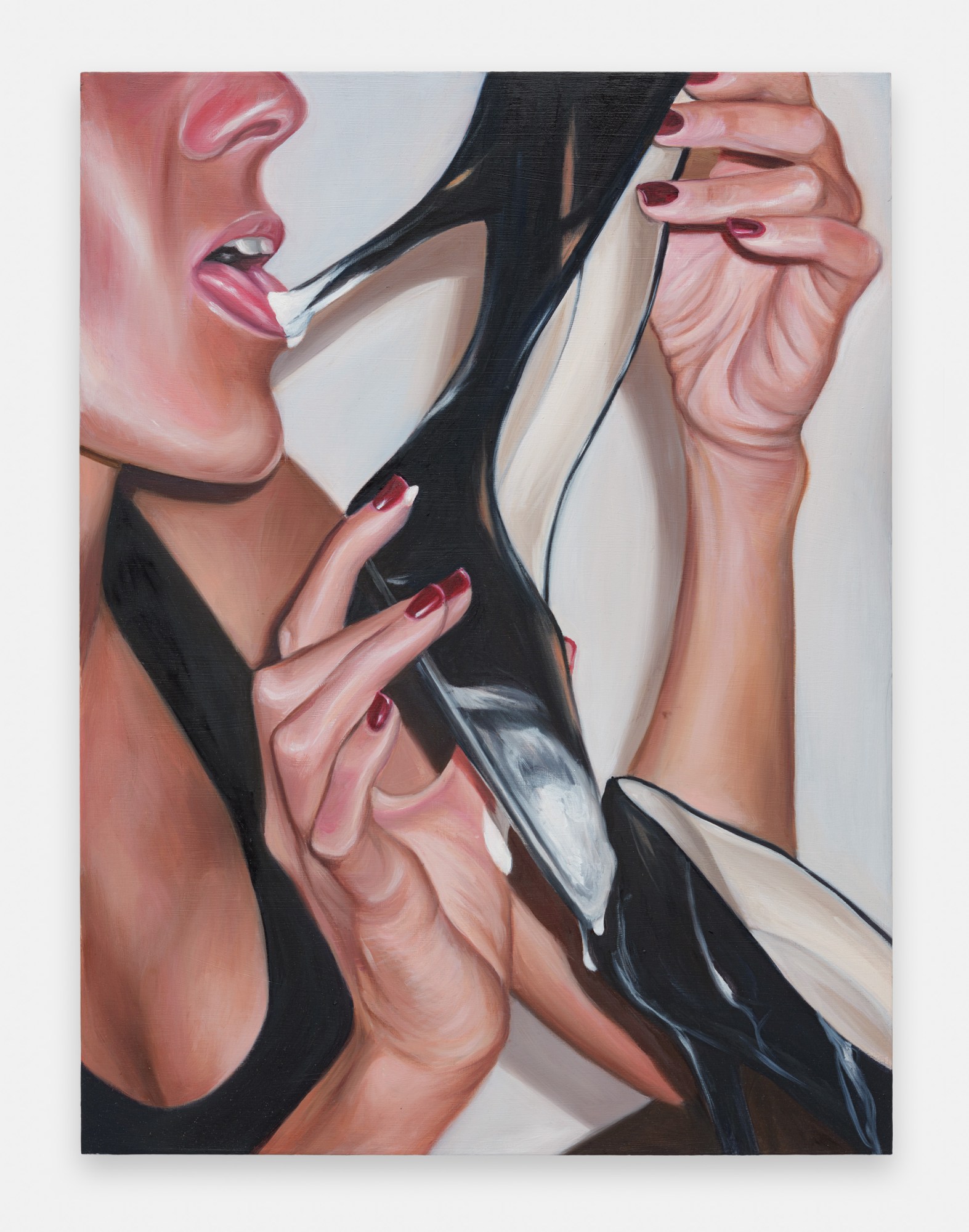
Credits
All artwork courtesy of Guts Gallery
